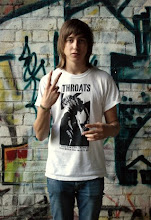Born Dashiel A. Snow, to parents Taya Thurman and Christopher Snow, he lived a course upbringing of private education and boarding schools, a childhood of tacit obedience which afforded him little room to flex the artistic intensions that began to brim over his consciousness. He was, in effect, booted by his mother into an institution which has been described by some to be ‘a last-chance boarding academy that offers objectively defined teenagers an alternative to prison.’ The experience or rather series of experiences Dash encountered at Hidden Lake Academy in Georgia further embellished his dramatic personality and want, nay, longing to be out of the reach of his family’s unblemished pedigree of French aristocracy and clean cut living. He held the decision undertaken by his mother to attempt a reformation of his ways against her even until death. I suppose by default, Dash’s passing broke the chain of resentment, maybe finally he was able to give up that ghost.

He was a photographer, a graffiti artist, a father, a street urchin, a drug user, an installation artist, a muse, ‘Warhol's child’, but overall he was just a really fucked up kid running along train tracks with confusion for company, breaking through the night veils and holding the city rapt with a can of raspberry spray paint. The jump from yobbish graffiti writer to downtown Baudelaire art world obsession was a transition more stumbled upon by Snow, very little of it had to do with premeditation or a blood-thirst to satiate ambition. The thing about Snow’s artwork, the whole crux of this fantasy of hotel room hookers and Jack Daniels, is that the illusion is only an illusion if you see it that way, by that I mean the fantasy was forever a reality for the young blonde haired toxic artist. His Polaroids pressed upon everyone who saw them, a keenness to exact out of life the main entities of sheer illumination, sex, friendship, love, struggle and death characterised all of his forages into self expression and cultural reaction.
Snow was fortunate enough to have the support of Ryan McGinley and Dan Colen, burgeoning downtown artists in their own right – a pair almost equally enamoured by the laissez faire approach to ejaculating on the New York Post and calling it collage. Headline after headline concerning corrupt cops and Saddam Hussein would be awash with seed and glitter. Colen and McGinley confess to being driven by ambition, to having had to work their way out of their backgrounds by peddling the only thing either of them admits to being able to do well, creating art.
Snow put together a crew of graffiti writers, and pooled them all together under the name ‘Irak’ – to ‘rak’ is a term popular within graffiti circles meaning to steal, this seemed somewhat appropriate for an ungoverned clandestine bunch of wild children, accustomed to breaking the law 10, 20 times a day. It was nevertheless an artistic venture, although Dash himself may not have readily admitted that. Instead he saw himself notching up tags on building after building for the purpose of enrolling himself on the page of infamy. His weapon of choice was just a pressure controlled can of noxious fluid instead of a whole host of instruments of sculpture or an SLR camera packed with a roll of colour film – the medium of choice for best friends Colen and McGinley respectively.
Much of Dash’s work corresponds to this notion of ‘banality’ - of resisting emotion and for the larger part, originality. The aesthetic of banal photography relies heavily on irony, on a deep sense of perceptual boredom. Artists associate themselves with the ordinary and vernacular instead of the extraordinary and remarkable. Therein lies the strength of Snow’s snapshots and collage, to find such quality in something so un-stirring is to make it remarkable by very definition.
One of my favourite Snow photos is perhaps one of the most archetypal Dash Snow images in general. It portrays the fringes of society and documents the debauchery and filth of a New York City twilight, whilst a man readily projects his alcohol laced stomach contents across the Manhattan pavement a basketball jersey clad observer appears almost in awe of his mean feat. This is street photography at its most abrasive, pulling no punches in its quest to depict the reality that Snow saw from behind his camera. Whether it’s valued for artistic qualities or whether it’s just interesting as a visual history of Dash Snow’s wanderings, there is no denial that this image holds your attention and no doubt evokes a strong reaction.
Dash Snow, gone but certainly not forgotten. Kept alive by two packs of Marlboro Reds, four big bottles of water a day and music.





No comments:
Post a Comment